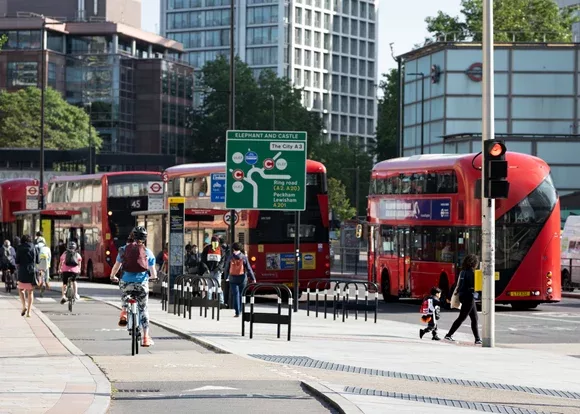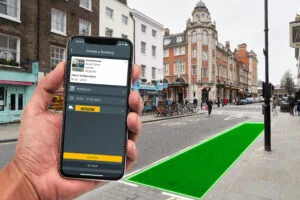Transport for London has announced that it will restart work on paused schemes to make the capital’s roads safer and more attractive for those walking and cycling, following vital investment being secured as part of the latest funding agreement with Government.
TfL was forced to pause some of its investment in walking and cycling schemes due to successive short-term agreements.
Following negotiations, in August TfL reached agreement with Government on a funding settlement until 31 March 2024. It can now resume spending on vital projects, with £80m per year to be spent directly by TfL on walking and cycling schemes as part of its Healthy Streets Programme.
These schemes will continue to support a green recovery from the pandemic, and create opportunities for safe, active and sustainable travel on London’s streets, supporting the Mayor’s Vision Zero goal of eliminating death and serious injury from the transport network.
This includes the start of construction of safer junction schemes at Holloway Road/Drayton Park and Battersea Bridge (subject to consultation), and pedestrian and cycling improvements at Streatham High Road and Manor Circus. TfL will also continue lowering speed limits across London to reduce road danger, with plans to introduce a 20mph speed limit on a further 28km of roads in the boroughs of Camden, Islington, Hackney, Tower Hamlets and Haringey by March 2023.
As part of the next phase of the Healthy Streets programme, TfL will also complete cycleways currently under construction and begin the construction of up to 14km of additional sections, including on:
- C9 East, from Brentford to Kensington Olympia
- C23, from Lea Bridge to Dalston
- C34, from North Acton to Shepherds Bush
- C37, from Hackney to Westferry
- C50, from Finsbury Park to Camden Town
TfL will also continue the design of a further 16km of cycleways, including sections of:
- C9 West, from Hounslow to Brentford
- C4 Extension, from Greenwich to Charlton
- Further sections of the C50, from Finsbury Park to Camden Town
- A new cycle route, from Wembley to Wood Lane
£12.8m will also be provided to London’s boroughs as part of the LIP Bus Priority Programme to deliver bus journey time improvements, contributing to the target of building 25km of new bus lane by March 2025.
In total, £69m annual funding has already been allocated to London’s boroughs to restart work on schemes to make the capital’s transport network safer, greener and more sustainable. As part of this funding, a further £9.8m in 2022/23 and £11m in 2023/24 will be provided to the boroughs as part of the Cycle Network Development programme. Construction includes the missing section of C4 on Lower Road, extending C2 from Stratford to Forest Gate, extending C6 from Kentish Town to Hampstead and protected cycle lanes on Loughborough Road.
Funding also includes the next phase of the Direct Vision Standard (DVS) programme, which aims to develop these standards further to improve visibility for HGV drivers. This includes consultation with the freight industry on proposed safe systems kit, that non-compliant HGVs would need to retrofit to their vehicles in order to obtain a Safety Permit from TfL and operate in London.
London’s Walking and Cycling Commissioner, Will Norman, said: “In the last two years we’ve seen more Londoners than ever choosing to walk and cycle around the capital, but successive short-term funding agreements from Government forced TfL and boroughs to pause spending on some permanent walking and cycling schemes. With the funding now agreed, I’m delighted that we can now restart work on these vital schemes - as well as beginning the design work for the next generation of new projects.
“The Mayor and I are determined to continue building a cleaner, safer and more prosperous London for everyone and encouraging more people to pick up greener and more sustainable transport options is a vital part of that.”
Penny Rees, TfL’s Head of Healthy Streets Investment, said: “Walking and cycling are absolutely essential to a more sustainable future for London and we’re determined to make our roads safer and ensure people who walk and cycle in the capital are safe and have easy, convenient routes to use. Investment in high-quality walking and cycling infrastructure, as part of our Healthy Streets programme, will continue to be vital to a green, healthy and sustainable future for all Londoners. The £69m per year of direct borough funding will also support more localised investment in walking, bus priority and cycling schemes across the city.”
(Picture – TfL)


























